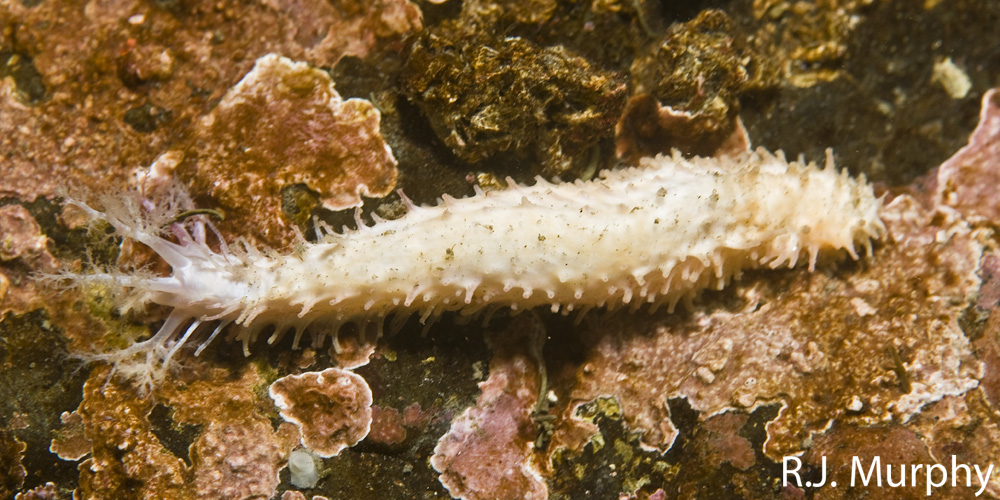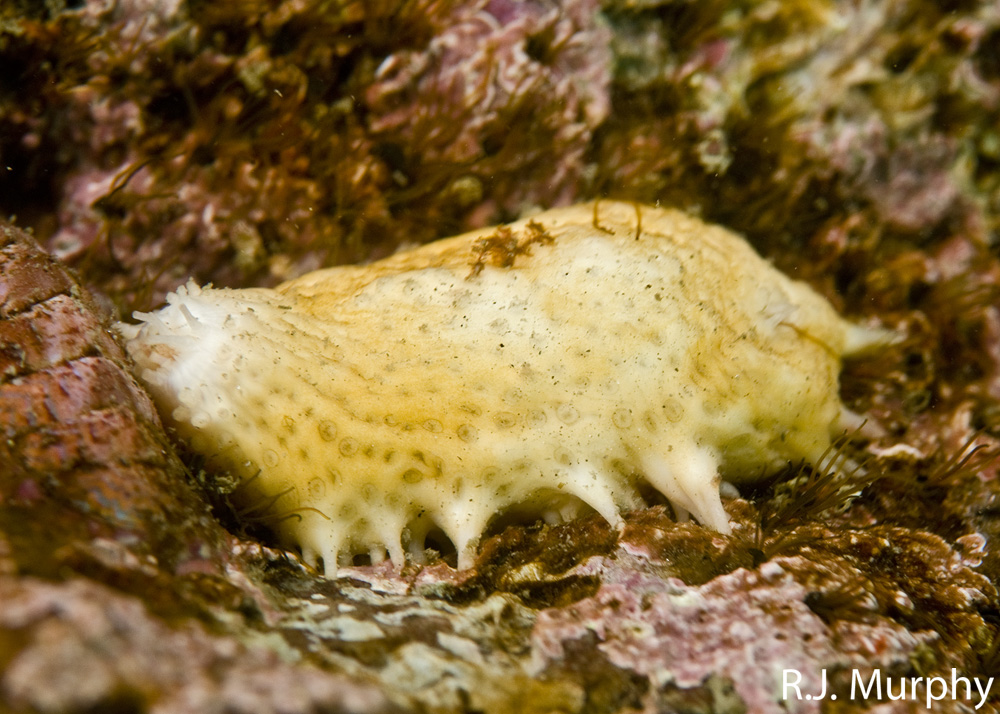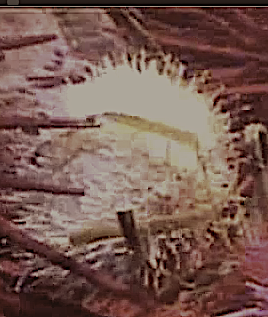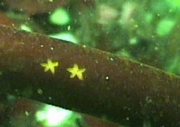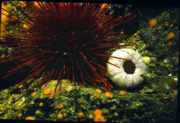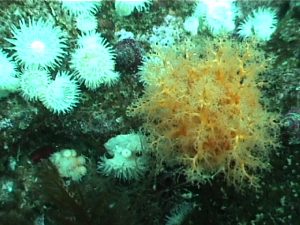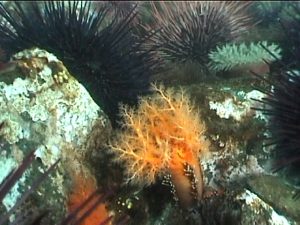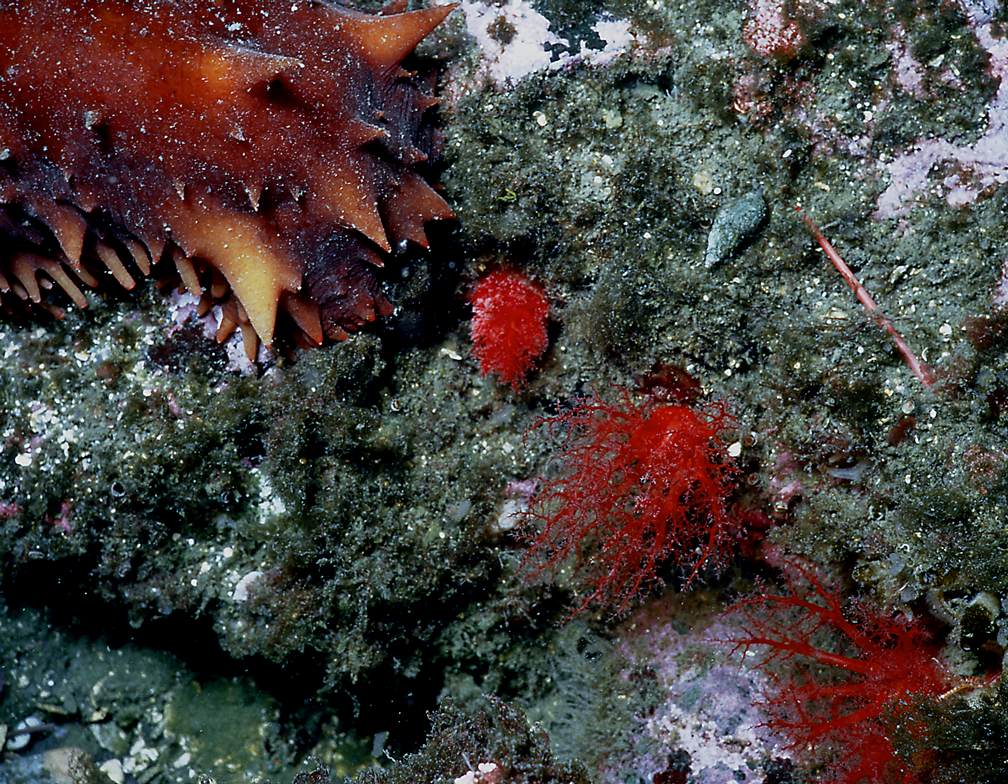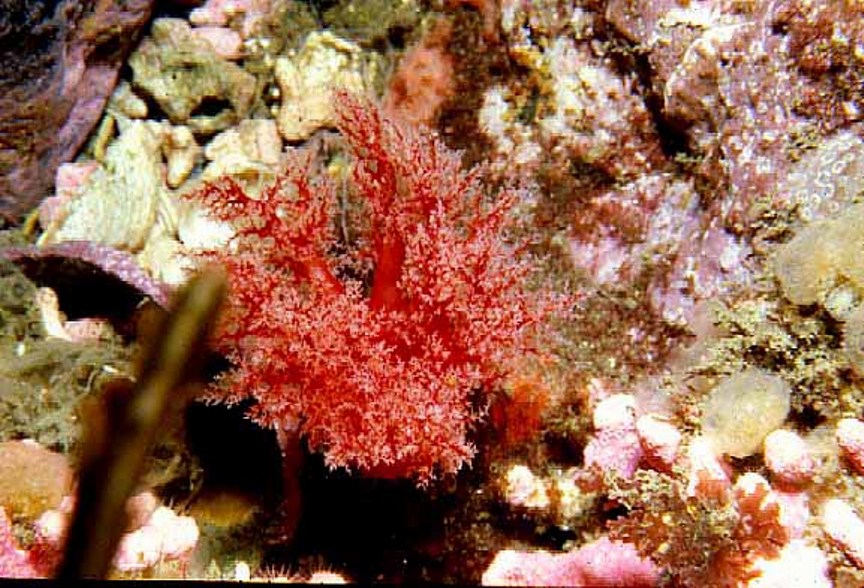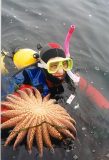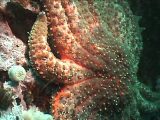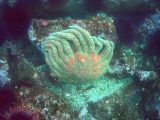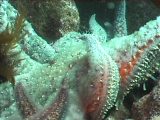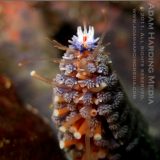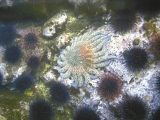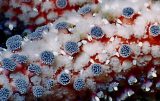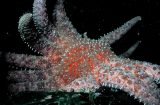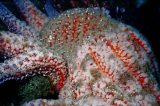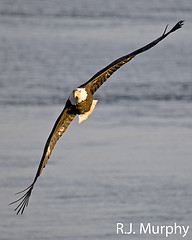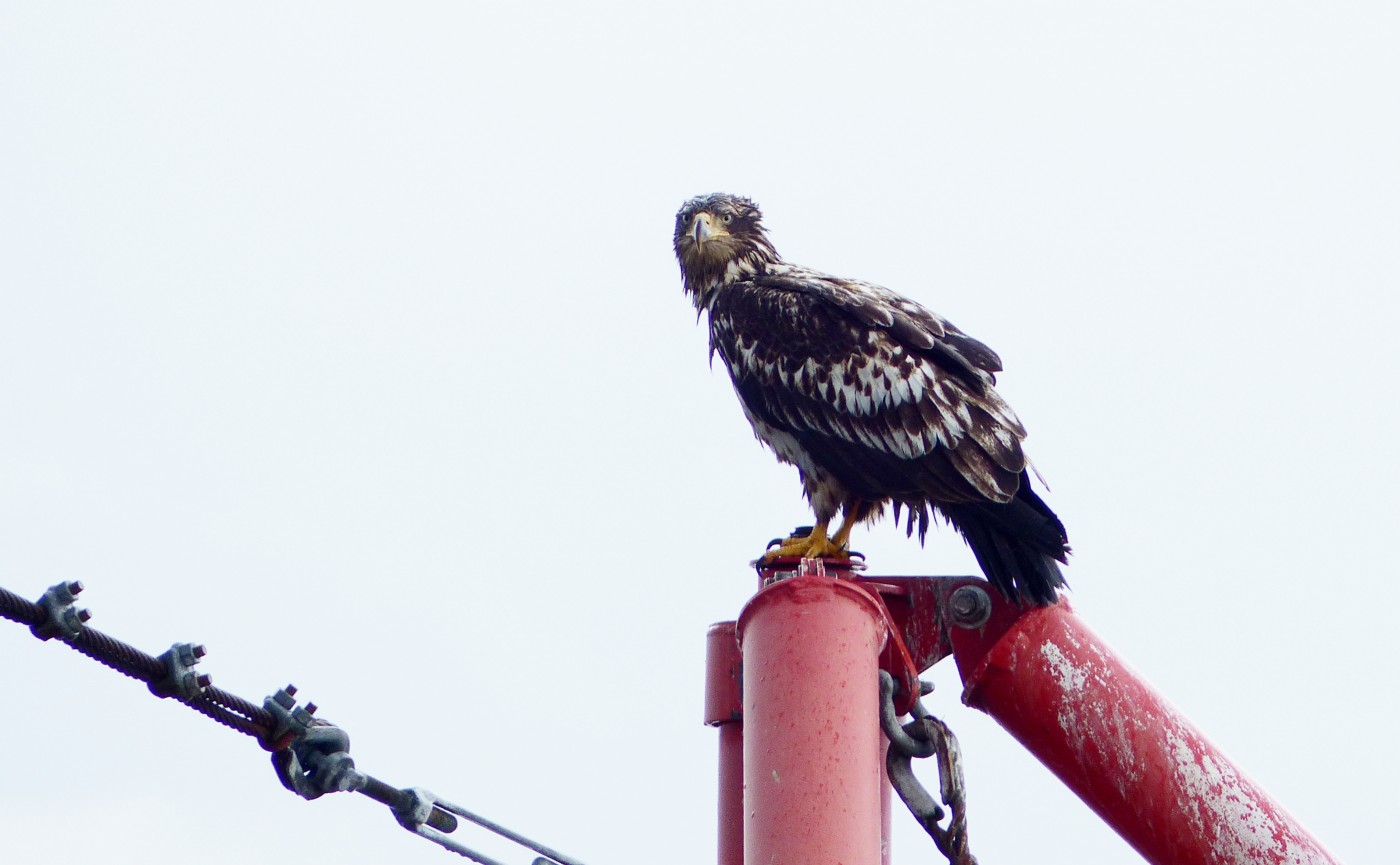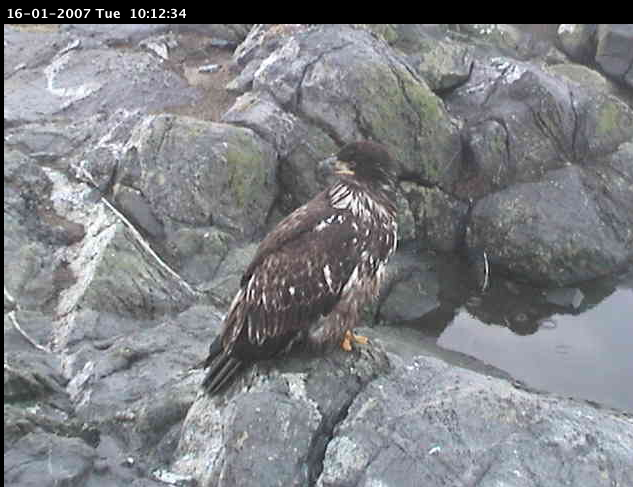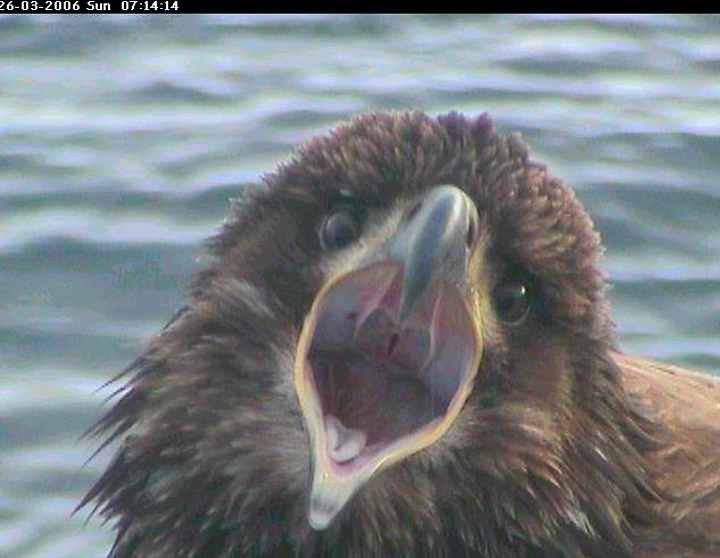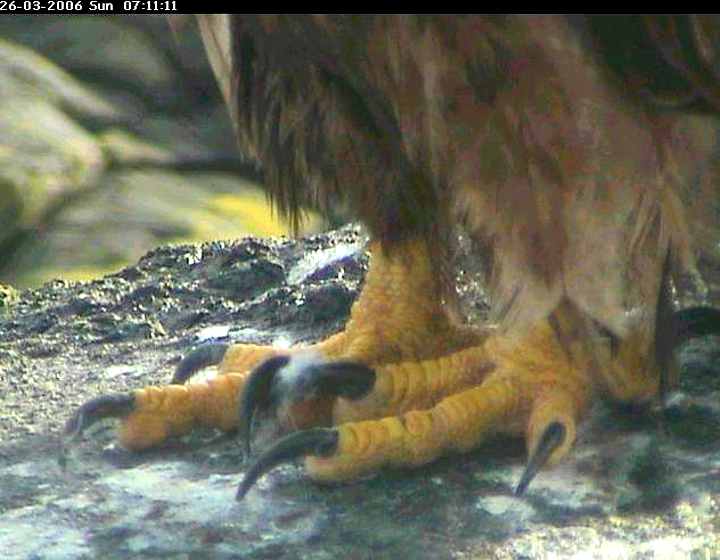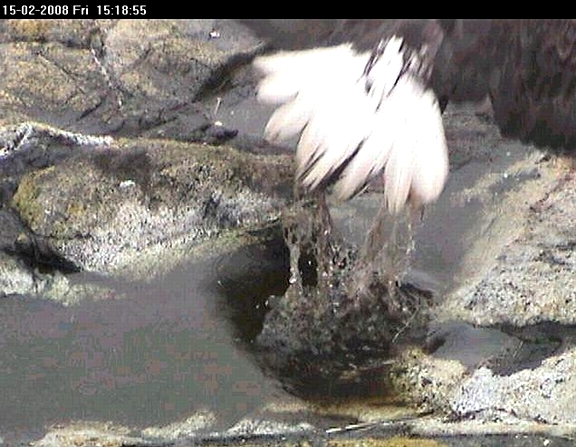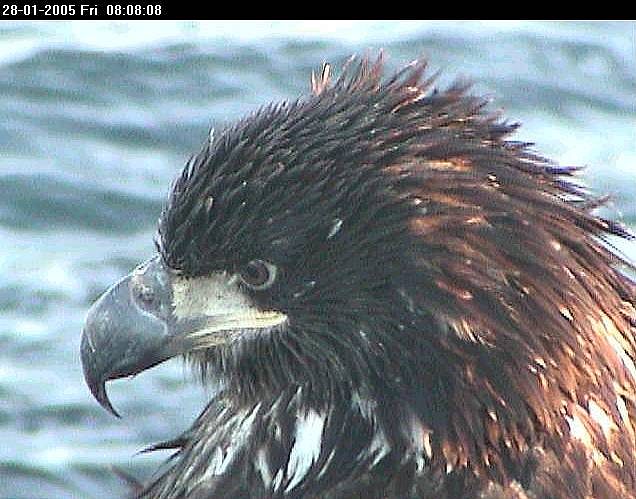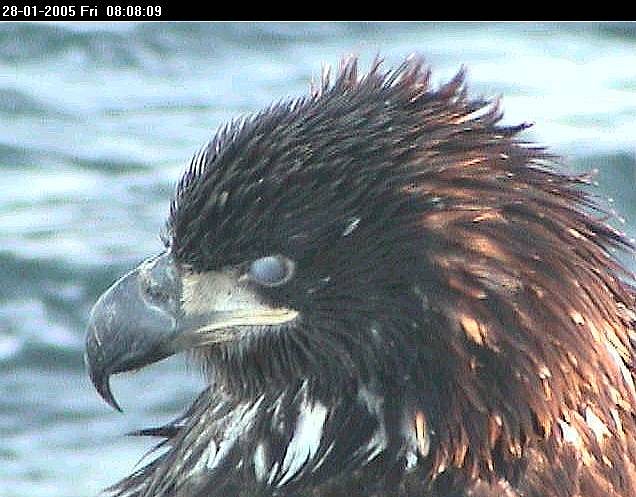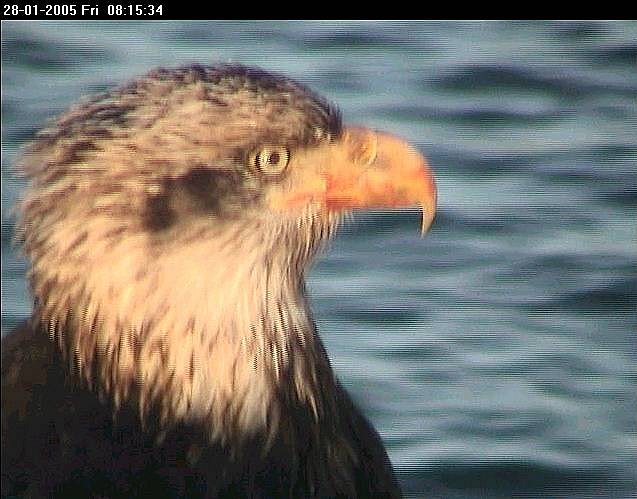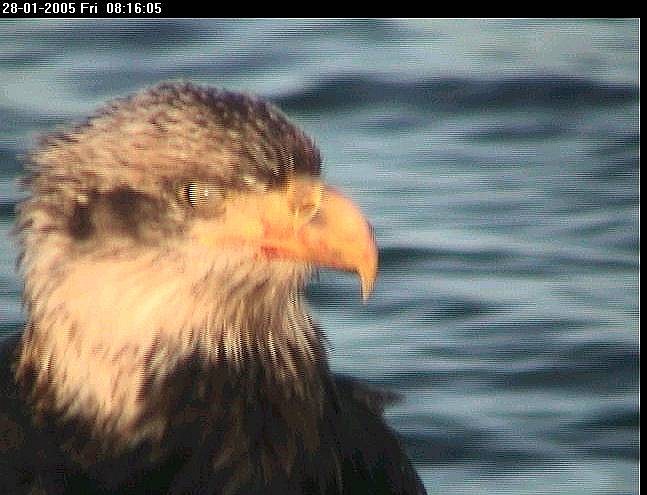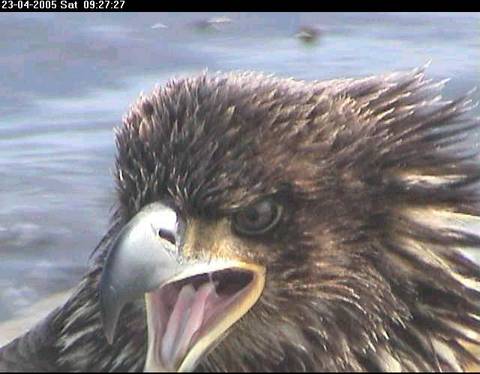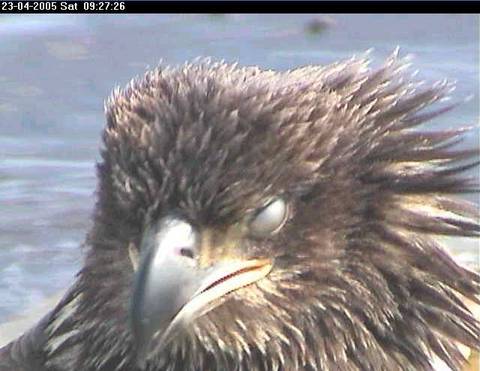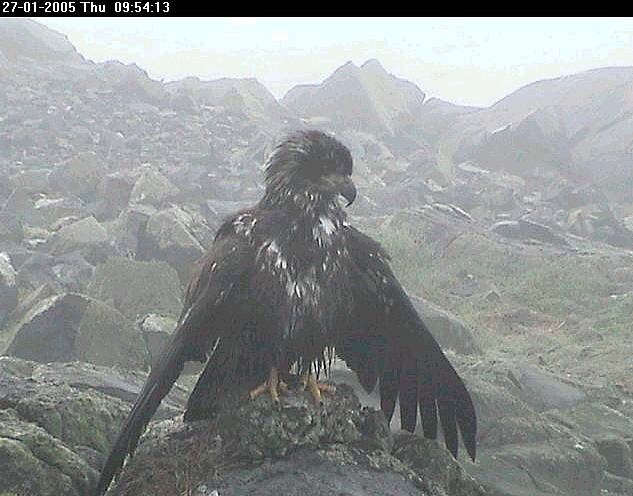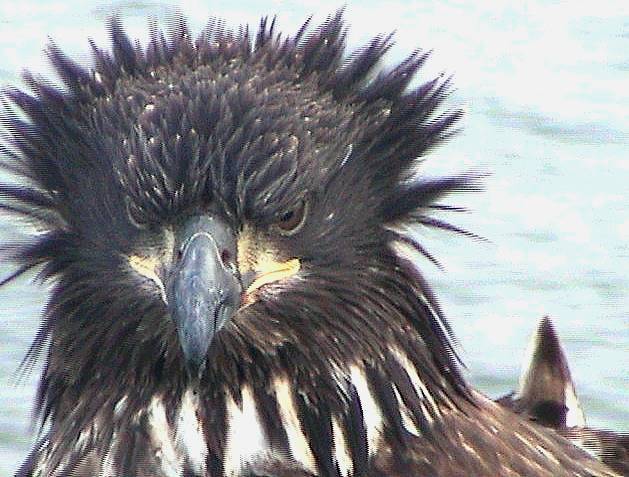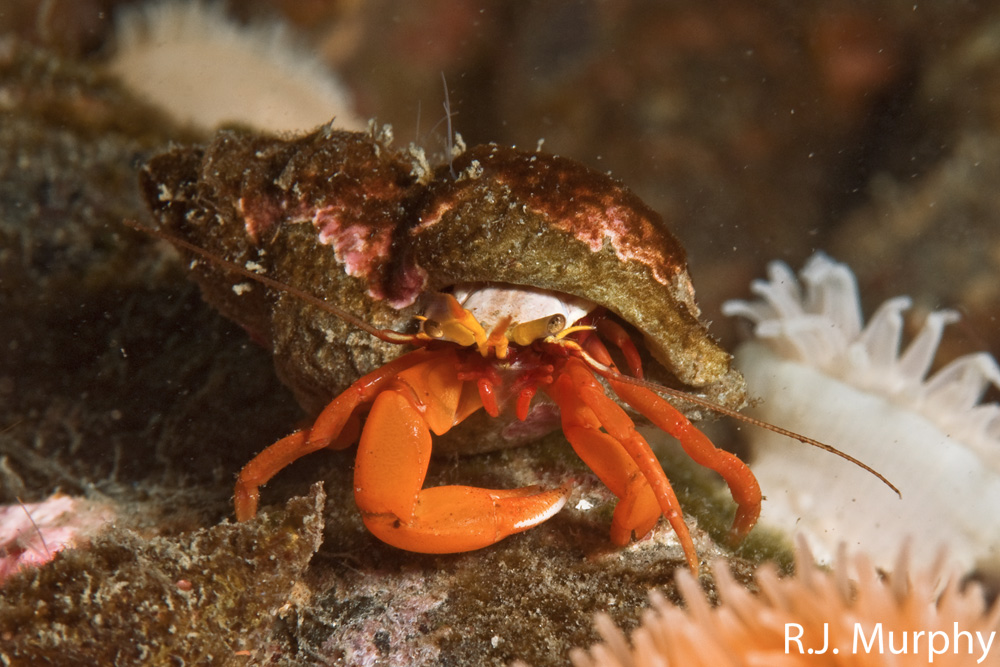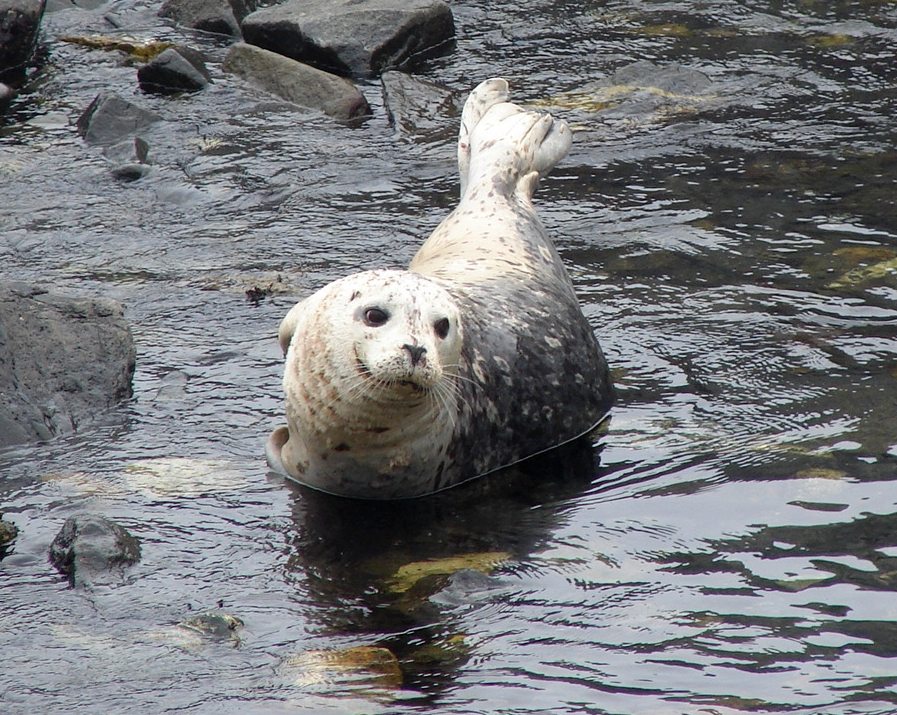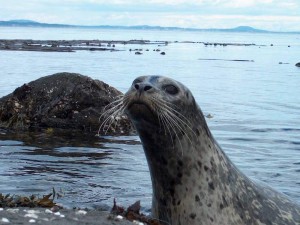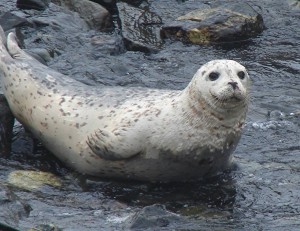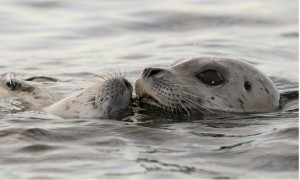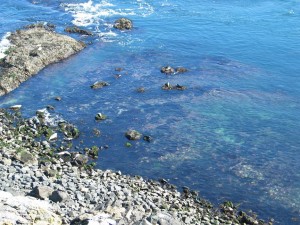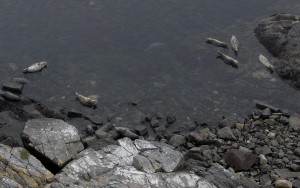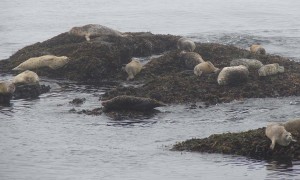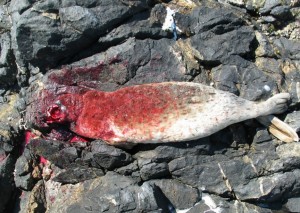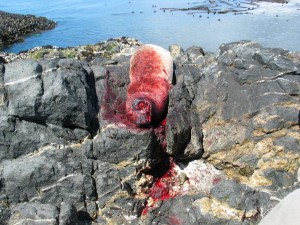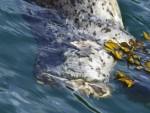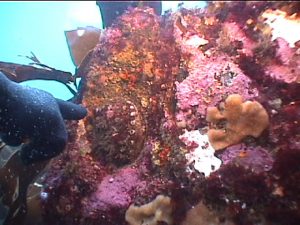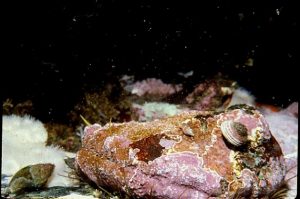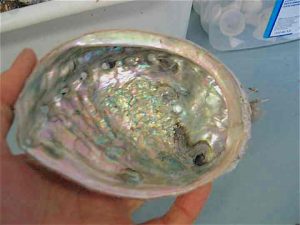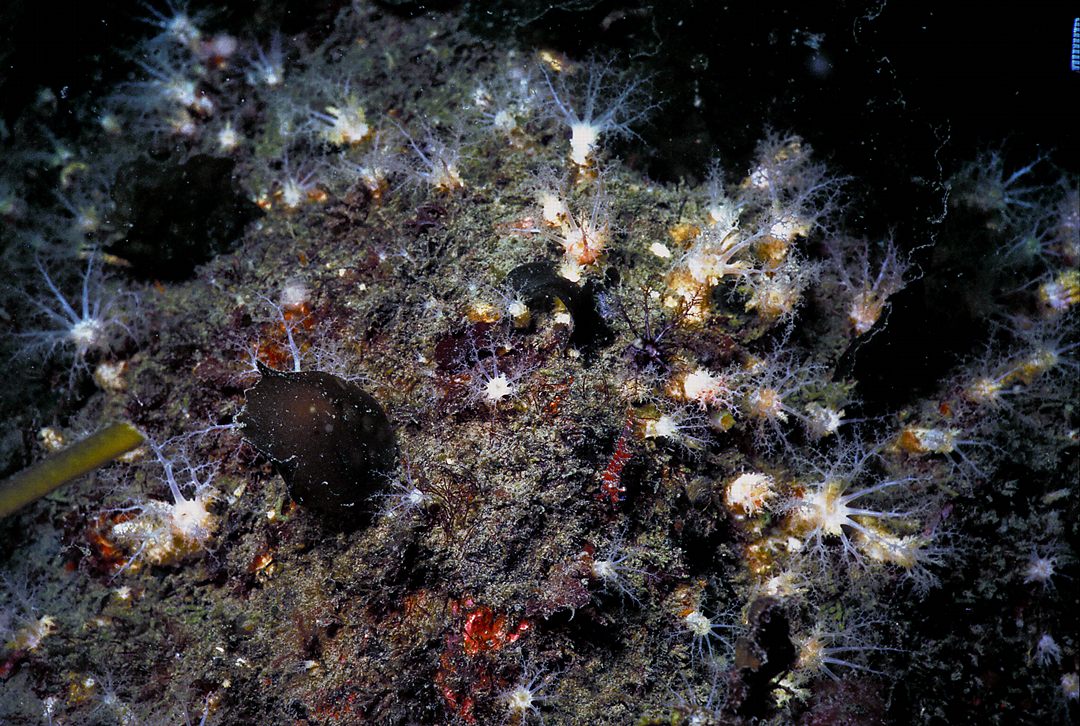 Here are the tentacles extended on a cluster of Eupentaca.Their bodies are hidden. Photo by Dr.A. Svoboda
Here are the tentacles extended on a cluster of Eupentaca.Their bodies are hidden. Photo by Dr.A. Svoboda
GENERAL DESCRIPTION
Eupentacta quinquesemita is stiff to touch due to abundant calcareous ossicles in the skin and tube feet. The body grows 4-8 cm in length. The non-retractile tube feet give it a spiky look. It has five rows of tube feet (four tube feet in width) with smooth skin between. The two ventral feeding tentacles are smaller than the other eight. This character is useful for identifying this species when only the tentacles are visible. The expanded tentacles are creamy white with tinges of yellow or pink at the bases.
Skin ossicles: numerous large, porous, ovoid bodies dominate the ossicles but among them are small, delicate baskets. The latter are important in differentiating this species from Eupentacta pseudoquinquesemita.
HABITAT
They are fairly common under the rocks and in cervices, low intertidal zone on rocky shores; common on concrete piles and marina floats in Monterey harbor, Vancouver (British Columbia) to Morro Bay (San Luis Obispo. Co). High densities of this species occur in strong currents. Juveniles (up to 1 cm) settle among hydroids and small algae in high current areas and on floating docks.
REPRODUCTION
Eupentacta quinquesemita is a suspension feeder. It spawns from late March to mid May. The female produces eggs greenish in color, 370 to 416 um diameter: the male releases sperm, and fertilization takes place in open water. The yolky egg develops into a non-feeding evenly ciliated larva. In culture, the larva grows to the armoured stage in 11 to 16.5 days.
PREDATORS
The predators of Eupentacta quinquesemita are: the Sun Star (Solaster stimpsoni), the Sunflower Star (Pycnopodia helianthoides), the Six-armed Star (Leptasterias hexactis) and the Kelp Greenling (Hexagrammos decagrammus).
BIOTIC ASOCIATION
The internal parasite, Thyonicola americana, a shell-less wormlike snail, attaches elongated coils of eggs to the intestine of E. quinquesemita. The larvae are released into the intestine and probably scape through the anus. Any parasites that are ejected by evisceration perish.
FEEDING
Is by shovelling of sediment into the mouth and digesting the microfauna within. No direct feeding is required. Is omnivore.
DomainEukarya
Kingdom Animalia
Phylum Echinodermata
Class Holothuroidea
SubclassDendrochirotacea
Order Dendrochirotida
Family Sclerodactylidae
Genus Eupentacta
Species quinquesemita
Common name White sea cucumber
REFERENCES
Lambert, P. 1997. Sea Cucumbers of British Columbia, Southeast Alaska and Puget Sound. UBC Press, British Columbia Canada. 166 pages
Morris, R., P. Abbott, and E. Haderlie.1980. Intertidal Invertebrates of California. Standford University Press, Stanford, California. 690 pages.
Kozloff, E. 1996 . Seashore Life of the Northern Pacific Coast. Fourth Edition. University Of Washington Press. Seattle and London. 370 pages.
| Other Members of the Phylum Echinodermata at Race Rocks |
and Image File |
 The Race Rocks taxonomy is a collaborative venture originally started with the Biology and Environmental Systems students of Lester Pearson College UWC. It now also has contributions added by Faculty, Staff, Volunteers and Observers on the remote control webcams. The Race Rocks taxonomy is a collaborative venture originally started with the Biology and Environmental Systems students of Lester Pearson College UWC. It now also has contributions added by Faculty, Staff, Volunteers and Observers on the remote control webcams.
Patricia (PC year28) |

